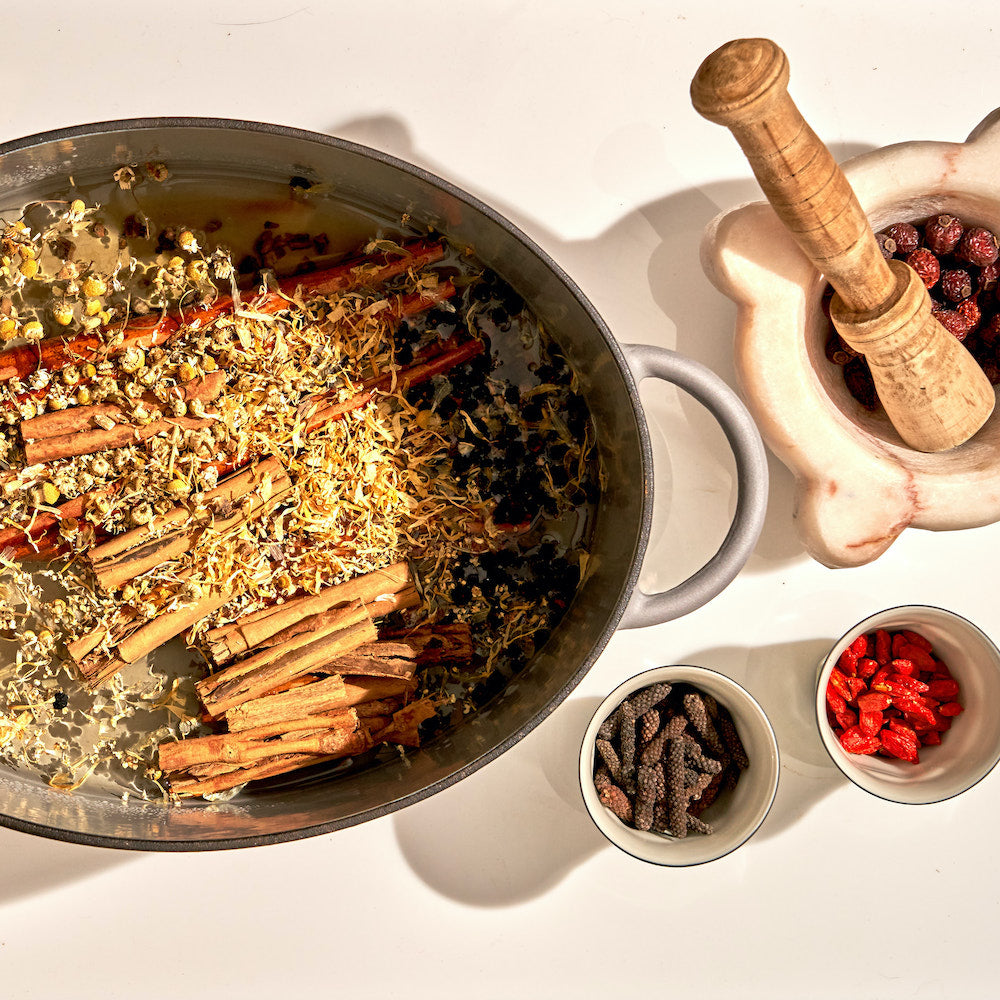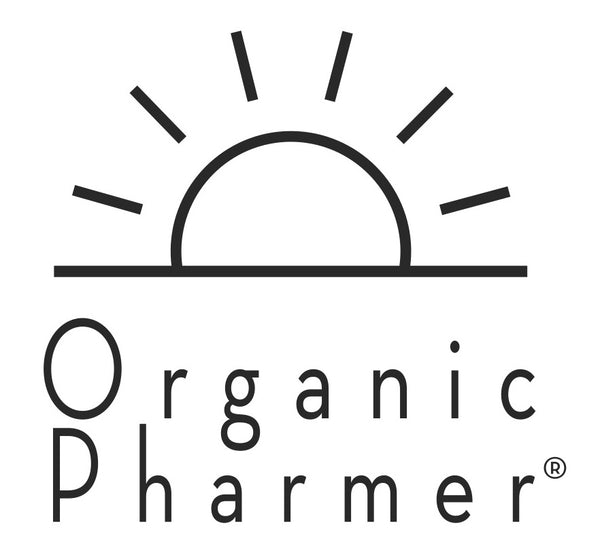
Unlock the Healing Power of Herbs and Spices in Your Kitchen
Share
Introduction to the World of Herbs and Spices
For centuries, herbs and spices have been celebrated across the globe for their ability to not only enhance flavors in dishes but also preserve food and serve as potent healing agents. Rich in antioxidants and antimicrobial compounds, they play a crucial role in preventing food spoilage. Beyond their preservative qualities, spices and herbs are known for making food more palatable and digestible, thanks to their carminative compounds that alleviate gas and bloating. These aromatic compounds, responsible for their enticing flavors and smells, are central to their digestive benefits.
Traditional Herbalism: A Closer Look at Spices
Viewing spices through the lens of traditional herbalism offers insight into their enduring use in disease treatment and health promotion, long before the advent of Western scientific research. Herbal traditions often categorize plants based on taste and the effects they have on the body. For instance, the "spiciness" experienced in black pepper or cumin is described as pungency in herbalism, attributed to their stimulating effect on digestion. While more research is warranted to fully understand these effects, emerging evidence supports the health benefits of common culinary herbs.
Spotlight on Healing Herbs

Coriander
Coriander is native to Western Asia and the Mediterranean, though it can now be found in cuisines from China, Africa, and India, to the Americas. It was considered a sacred herb by ancient Egyptians and was often included in burial rituals. The leaves, often known in the US as cilantro, are used widely today in various cuisines as well. Like many other culinary herbs, coriander, specifically the seed portion of the plant, has been used to preserve foods, and was even included in beer-making in medieval times. It is often used in Traditional Chinese medicine and Ayurvedic traditions for its healing digestive properties and its ability to soothe inflammation. We use coriander in our Vegan Bone Broth, which means it’s present in the base for all of our healing soups.
Cumin
Like coriander, cumin is in the same family as dill and caraway, and originated in the Mediterranean region. Also, like coriander, cumin seeds were brought to the Americas by Spanish and Portuguese colonizers and now are used widely in various cuisines almost worldwide. Today, India is the largest producer and consumer of the spice, with about ⅔ of global production and consumption taking place there. Our Tunisian Tomato and Curried Cauliflower soups both feature this tasty and healing spice. Cumin is surprisingly rich in iron, with only a teaspoon containing 17.5% of the RDI (recommended daily intake). It’s full of antioxidants that help to prevent oxidative damage in the body, and has been shown to help control blood sugar when consumed regularly.
Cinnamon
Cinnamon is native to Sri Lanka, though now it is grown throughout many tropical climates. It is an evergreen tree of the laurel family, but the inner bark is the part of the plant that is used as a spice. Like the aforementioned Mediterranean natives, cinnamon has been used traditionally to help digestion, to flavor dishes and to help preserve foods. Today, it’s known that cinnamon has anti-diabetic properties as it can help maintain lower blood sugar levels, and its pungent nature can help improve circulation. Cinnamon is considered a warming spice in the Ayurvedic tradition, meaning it may be beneficial for people who tend to be cold, or have poor circulation. Interestingly, cinnamon also has mucilaginous qualities, which means when taken internally it can help to moisten tissues in the body. Sometimes warming herbs can dry out body tissues, and the mucilaginous quality can balance this, making it a very safe herb for consumption. However, care should be taken to not take more than recommended amounts of cinnamon, as it does contain coumarin, a compound that can irritate the liver, especially in those with liver disease. The amounts contained in food are generally considered safe for consumption unless you have an allergy or sensitivity to cinnamon. You can find cinnamon in our protein bars and granola, our Butternut Lentil Bisque and Tunisian Tomato soups, as well as in our Trainer protein shake beverage.
Turmeric
Turmeric is in the same family as ginger, both of which are known as rhizomes, or roots that grow beneath the soil. Turmeric is native to South Asia and has been used in traditional cooking in India for centuries. Here the herb is revered and is even used in wedding ceremonies, adorning the skin of the bride and groom as they marry to bless them with a fortuitous union. In the wider medical world today, turmeric is a well-known anti-inflammatory and has been used to treat arthritis, and liver disease, and is known to help with wound healing among other applications. Curcumin is the compound that gives this plant its unique bright orange or yellow color, and it is believed to be the active compound responsible for many of its healing properties. Turmeric becomes more bioavailable, meaning more of its active compounds are able to be absorbed and utilized by the body, when it is combined with black pepper. You can find this combination in our Flow and Golden Milk beverages, as well as in our Vegan Bone Broth and Tunisian Tomato soup.

Shop Organic Pharmer's Products Packed with Herbs
Black Pepper
Interestingly, the herb that pairs well with turmeric shares its same origin in India. Black pepper is the seed of an evergreen tree that now grows throughout many tropical regions of the world. Like many other culinary herbs it is well known for its ability to aid in digestion and relieve digestive discomfort. Today it has been studied for its health promoting properties which include a long list of benefits including its ability to counter inflammation, depression, diabetes, cancer, and pain, among others. It’s no wonder that this spice has been incorporated so widely across cuisines of the world. You can find it in all of our healing soups, as well as in our Flow and Golden Milk beverages.
Curry powder v. curry leaf
Something to note here is the difference between curry powder and curry leaves. They aren’t interchangeable as one may assume from their shared name. Curry leaves come from the curry tree and are used widely throughout India in different regional cuisines. Curry powder is actually a British invention that came through the colonization of India. Curry powder is simply a spice blend of many common spices, often including the ones we’ve already mentioned, like coriander, cumin, and turmeric among others. It’s a great way to add balanced flavor to a dish without going through the work of measuring out a number of different spices. We use curry powder in our Curried Cauliflower soup to create a delicious, warming blend of spices paired with cauliflower, onions, and apples. Curry powder has many health benefits including high levels of antioxidants, antimicrobial properties, improved blood sugar balance and satiety, as well as neuroprotective properties.
Thyme
A hearty and woody herb of the mint family, thyme is cultivated throughout the world currently, but it originated in Eurasia. For these reasons, its culinary use is broad and it’s been used in dishes of fish, poultry, stuffings, soups, sauces, vegetables, and pastas. Like the other culinary herbs we’ve discussed, thyme contains aromatic compounds that aid in digestion and food preservation. Specifically, the compound thymol has been isolated from thyme and used in perfumes and toothpastes. Thymol has antimicrobial properties and can even be used as a cleansing or disinfecting agent. Some studies have shown that thyme can lower blood pressure in rats, and in humans it may protect against colon cancer. Research has also shown benefits of thyme in increasing cell death in breast cancer, combatting yeast infections, and other skin fungal infections. In culinary use, thyme can extend the shelf-life of cooking oils by preventing oxidation. At Organic Pharmer, we use it in our French Lentil Soup for its flavor and health benefits.
Rosemary
Similar to its relative thyme, rosemary is also a woody herb of the mint family. It’s native to the Mediterranean, but is now grown throughout many warmer climates of the world. In the Middle Ages, rosemary was revered as a beneficial herb that could keep evil spirits away and protect against the plague. For this reason it was incorporated into daily life and used widely in cooking, perfume making, and for medicinal uses as well. Like many other herbs and spices, rosemary is plentiful in antioxidant compounds, and it also contains significant levels of iron, calcium and vitamin B6. Today, research has touted the neuroprotective benefits of rosemary, as it has been shown to prevent brain damage in humans and aid in recovery after stroke events in mice. The smell of rosemary alone has shown to enhance learning and memory retention in some studies. It’s also been found to have anti-cancer properties. We use rosemary in our Vegan Bone Broth, as well as our Tuscan White Bean soup for its delightful flavor and healing properties.
Embracing Food as Medicine
This detailed exploration underscores the integral role of herbs and spices in health and cuisine throughout history. As we move away from processed foods, reconnecting with these natural healers becomes even more essential. Incorporating fresh or dried herbs into daily cooking not only enriches flavors but also fortifies our health. Whether it's adding a pinch of cumin to roasted potatoes or experimenting with turmeric in soups, the potential of herbs and spices to transform our meals and wellbeing is boundless.
Herbs and spices are more than mere flavor enhancers; they're a bridge to a healthier lifestyle, rooted in centuries of tradition. By integrating these powerful plants into our kitchens, we not only pay homage to their rich history but also unlock their potential to nourish and heal. Let's embrace the full spectrum of flavors and benefits these culinary treasures have to offer.
About Author

Stephanie is the current fulfillment director and kitchen supervisor for Organic Pharmer. She studied Neuroscience at University of California, Irvine before studying Naturopathic Medicine for 2 years at National University of Natural Medicine in Portland, Oregon. She also spent 3 years studying East Asian Medicine at the same university.
